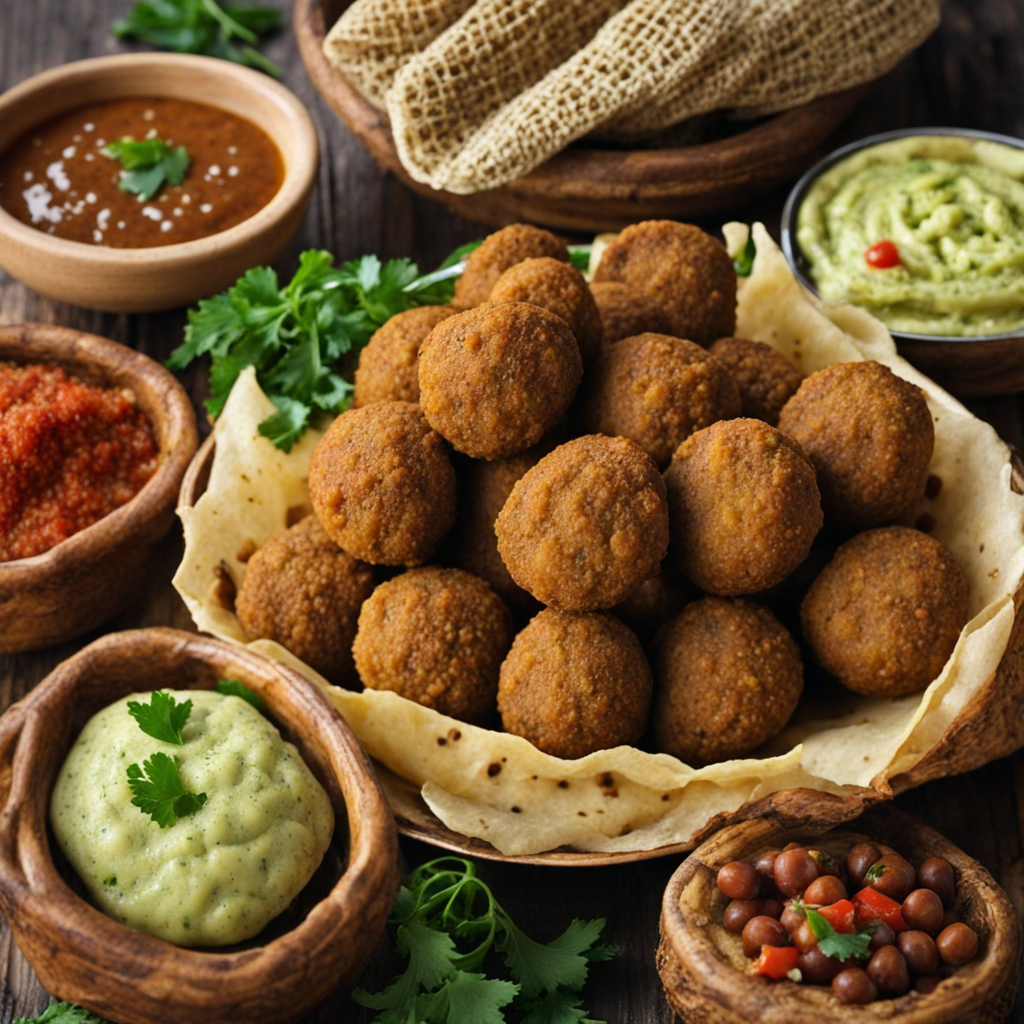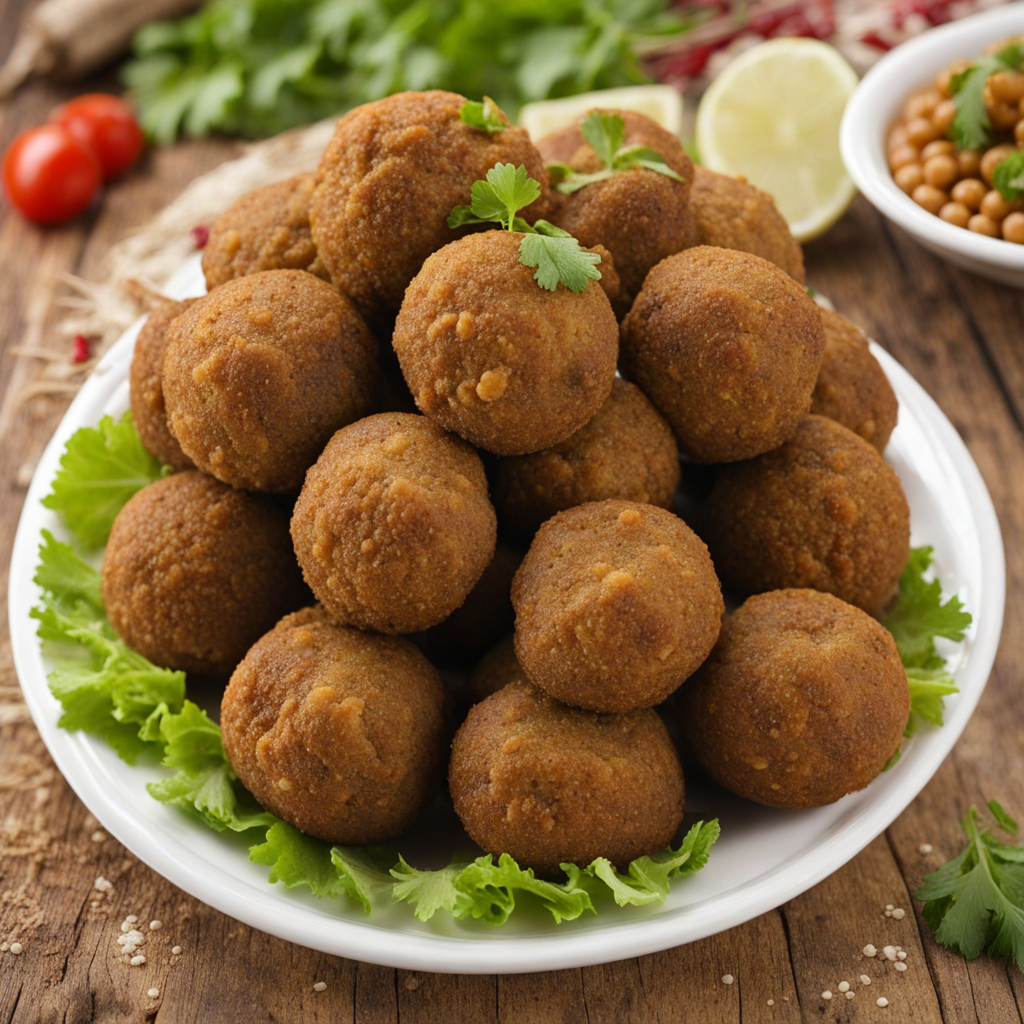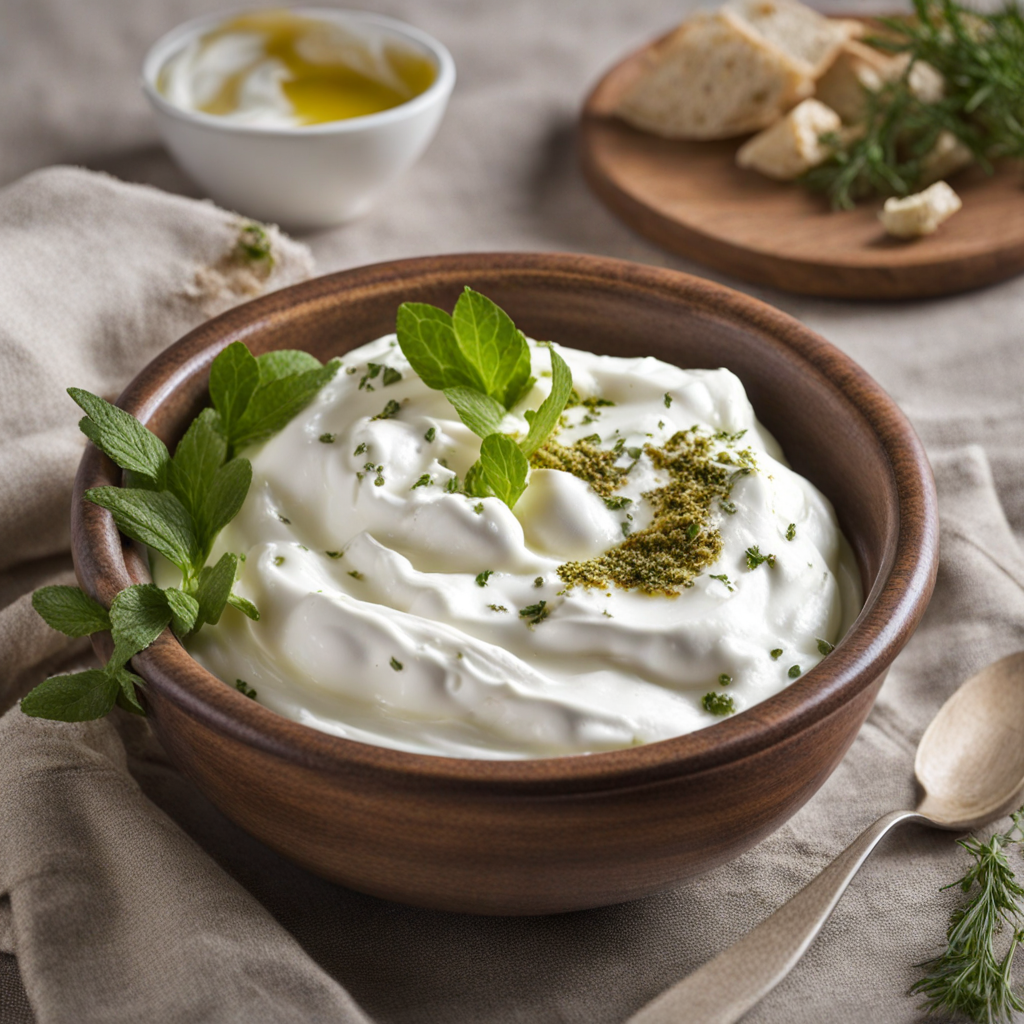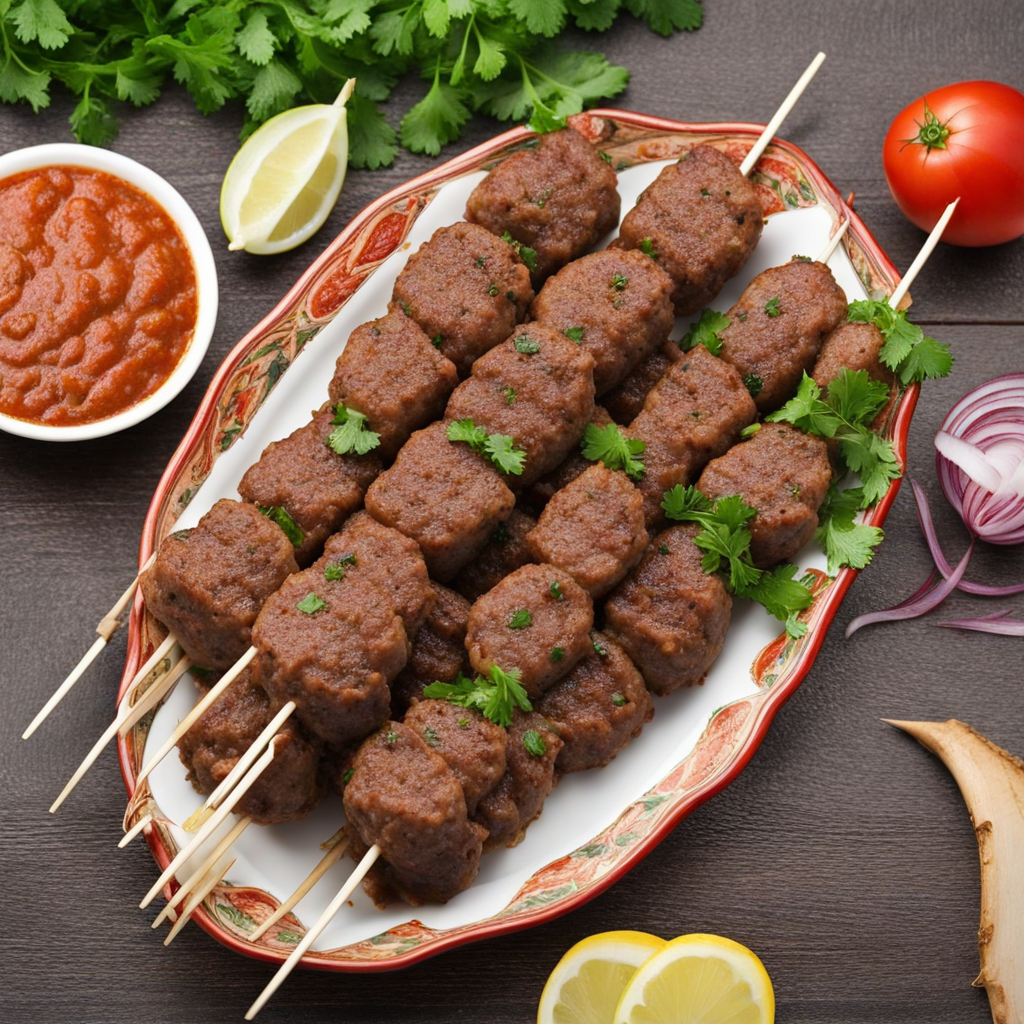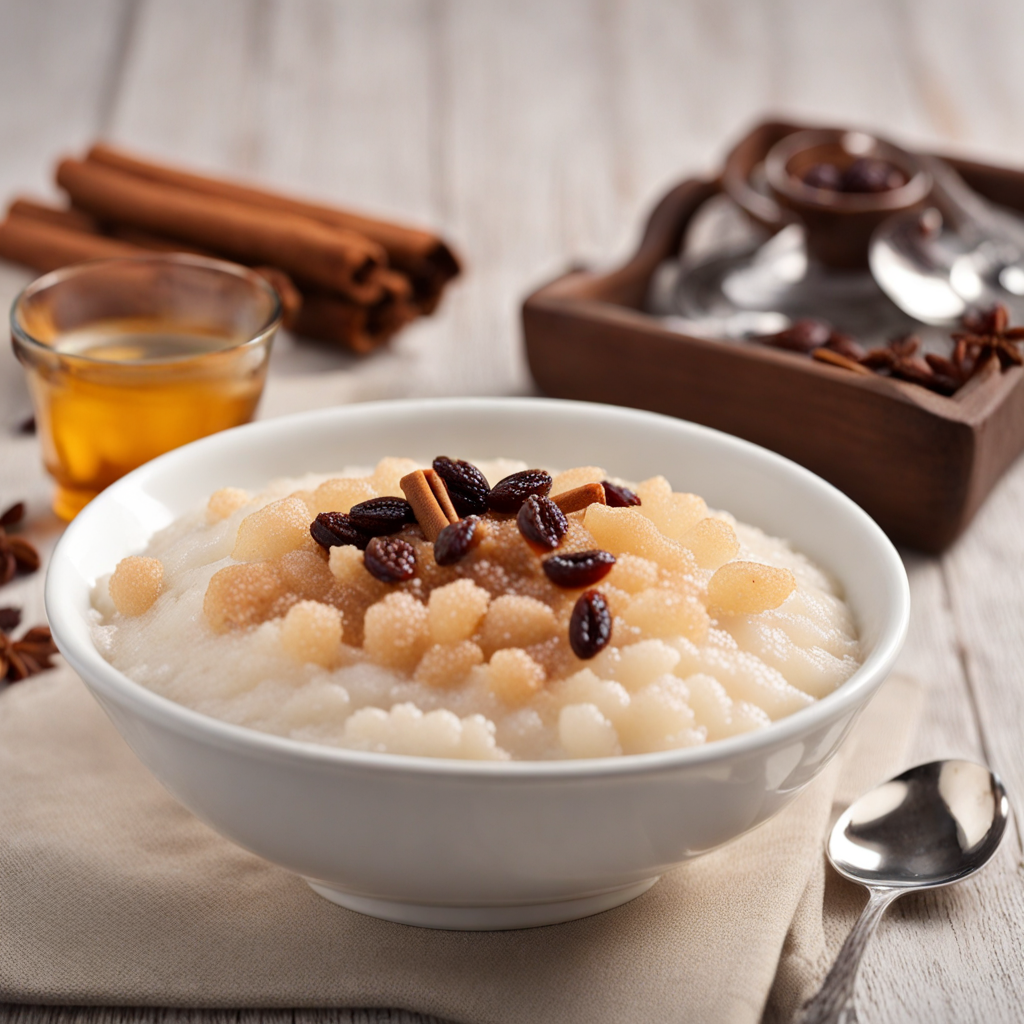Falafel
Falafel is a delightful Middle Eastern dish that has garnered worldwide popularity, particularly in Lebanon, where it is a staple street food. These deep-fried balls or patties are primarily made from ground chickpeas or fava beans, seasoned with a medley of aromatic herbs and spices such as garlic, cumin, and coriander. The result is a crispy exterior that gives way to a soft, flavorful interior, making each bite a celebration of texture and taste. Often served in pita bread or on a platter, falafel is typically accompanied by fresh vegetables, pickles, and a drizzle of tahini sauce, adding layers of flavor and complexity to the dish. In Lebanese cuisine, falafel is not just a meal; it embodies a cultural experience. When enjoyed in a bustling street market, the vibrant atmosphere enhances the experience as you savor the hot, golden-brown falafel, often freshly made right before your eyes. The combination of spices and herbs used in the falafel mix highlights the rich culinary traditions of Lebanon, where flavors are bold yet harmonious. Pairing a hot falafel with tangy pickled turnips or creamy tahini sauce creates a delightful contrast that tantalizes the palate. Vegetarian and vegan-friendly, falafel is an excellent choice for those looking to explore plant-based cuisine. It provides a satisfying source of protein while being naturally gluten-free, making it accessible to many dietary preferences. Whether you enjoy it as a quick snack, a filling lunch, or a part of a festive meal, falafel is a versatile dish that invites you to discover the vibrant flavors of Lebanon. Each bite transports you to the heart of its culinary heritage, celebrating the love of good food and the joy of sharing it with others.
How It Became This Dish
Origins of فلافل The history of فلافل (falafel) can be traced back to ancient Middle Eastern cuisine, with its origins often linked to Egypt, where it is believed to have been made from fava beans in the form of a dish called "ta'amiya." Some food historians suggest that ta'amiya dates back to the 4th century AD, making it one of the earliest forms of falafel. The dish was likely consumed by the Copts, an Egyptian Christian community, as a meat substitute during Lent. As trade and cultural exchanges flourished in the region, the concept of deep-frying ground legumes spread to neighboring countries, including Lebanon. The exact timeline of falafel's introduction to Lebanon remains ambiguous, but it is widely accepted that the dish became popular in Lebanon during the 20th century. The use of chickpeas instead of fava beans became more prevalent, particularly in the bustling streets of Beirut. The Lebanese version of falafel is characterized by its unique blend of spices, including cumin, coriander, garlic, and fresh herbs, which contribute to its distinct flavor profile. This transition highlights the adaptability and evolution of the dish as it traveled through different cultures and communities. Cultural Significance in Lebanon In Lebanon, falafel is more than just a street food; it represents a cultural icon and is deeply rooted in the country’s culinary traditions. It is often consumed as part of a mezze platter, alongside other popular dishes such as hummus, tabbouleh, and baba ghanoush. The act of sharing a meal featuring falafel symbolizes hospitality and community, reflecting the Lebanese ethos of gathering around food. Falafel stands are ubiquitous throughout Lebanon, from bustling urban centers to rural villages, making it an integral part of everyday life. Vendors, often family-run businesses, take great pride in their recipes, each claiming to have the secret to the perfect falafel. This local competition fosters a sense of pride and encourages culinary innovation, leading to unique variations in preparation and flavor that are emblematic of regional identities within Lebanon. Falafel in the Global Context As Lebanese immigrants spread across the globe, they brought falafel with them, introducing it to new audiences and making it a staple in many countries. In the United States and Europe, falafel gained popularity in the late 20th century, particularly among vegetarian and health-conscious consumers. Its reputation as a nutritious, protein-rich option solidified its place on menus ranging from food trucks to upscale restaurants. The growing interest in Middle Eastern cuisine globally has further cemented falafel's status as an ambassador of Lebanese culinary heritage. Food festivals and international culinary competitions often feature falafel, showcasing its versatility and adaptability. This global enthusiasm has also led to a revival of traditional preparation methods, with many chefs advocating for the use of fresh, local ingredients in their falafel recipes. Modern Adaptations and Innovations While traditional falafel recipes remain popular, modern adaptations have emerged in response to changing dietary preferences and trends. For instance, gluten-free and vegan variations have gained traction, appealing to a broader audience. Some chefs experiment with different types of legumes and ingredients, introducing elements like spinach, beets, and even quinoa to the falafel mix. These innovations not only preserve the essence of falafel but also reflect contemporary culinary trends that emphasize creativity and sustainability. Street food culture has also evolved, with gourmet falafel establishments offering artisanal versions of the dish. These modern eateries often focus on high-quality ingredients, unique flavor combinations, and inventive presentation, catering to a more discerning clientele. Additionally, the rise of food delivery platforms has made falafel more accessible than ever, allowing people to enjoy this beloved dish from the comfort of their homes. Preservation of Tradition Despite the modern twists and the global proliferation of falafel, there remains a strong emphasis on preserving traditional methods of preparation. Many Lebanese families continue to make falafel from scratch, using time-honored techniques passed down through generations. This commitment to tradition is evident in the meticulous preparation, from soaking the legumes overnight to carefully blending the spices, ensuring that each batch of falafel retains its authentic flavor. Furthermore, food festivals and cultural events in Lebanon often celebrate falafel as a symbol of national pride. Competitions to determine the best falafel recipe or the largest falafel sandwich not only foster community engagement but also promote awareness of Lebanon's rich culinary heritage. Such events help to educate younger generations about the importance of traditional foods in preserving cultural identity and history. Conclusion: A Dish of Unity As falafel continues to thrive in Lebanon and around the world, it stands as a testament to the resilience and adaptability of cultural cuisine. The dish embodies the spirit of unity and connection, transcending borders and bringing people together through the shared experience of food. Whether enjoyed in a bustling Beirut street or at a trendy café in New York City, falafel remains a beloved dish that carries with it the stories and traditions of the Lebanese people. In essence, falafel is more than just a meal; it is a symbol of cultural heritage, community, and the enduring power of food to bridge divides. As the world becomes increasingly interconnected, falafel serves as a reminder of the rich tapestry of flavors and traditions that make up our global culinary landscape.
You may like
Discover local flavors from Lebanon


